Given the need to focus on various forms of technology to get our jobs (and just about everything else) done, it’s more and more difficult to unplug and get in touch with natural things (which lower stress and anxiety). Being “plugged in” most of the day and evening creates a subtle agitation in our nervous systems that makes it difficult to unwind. We’re wired.
And because this is generally happening all day and part of the night, we see it as our norm and generally don’t notice its effect on our minds and bodies. Then we wonder why we feel anxious and stressed much of the time because we’ve forgotten what it’s like to be truly unplugged.
When we do unplug, we feel agitated and uncomfortable because we don’t have a screen in front of us offering an endless diversion from the quiet inside us that we strive to avoid.
To quell these heightened feelings of stress and anxiety, there are endless numbers of apps that promise to help. It seems ironic that we would use these same electronic devices that create the anxiety to calm ourselves down.
Most of these apps rely on auditory types of supports such as chimes to remind you to pause and be in the moment and guided meditations that talk you through a relaxation process. Others offer soothing music or sounds. Personally, these auditory tools further distract me from being present. When I meditate, I prefer silence.
When I sit in silence, my mind has a moment to slow down and process all the inputs it’s been receiving. As a long-time meditator, I still find it difficult to get my mind to completely chill. But it does get a chance to slow down. For me, that’s when the magic happens. Ideas for things that had been bubbling in my subconscious come to light. Answers to problems suddenly become clear. My mind and body calm down. But that’s me and the way my mind works. You’re probably different.
The Three Learning Styles
Everyone has a preferred way of learning and interacting with the world (and meditating): auditory, visual and kinesthetic. These are considered the three styles of learning. For me, listening to someone speak about a subject or describe something isn’t as effective as seeing pictures that portray the concept because I’m more visual. My husband is a cross between auditory and kinesthetic. He needs to talk things through to process the concepts and learns better by physically doing things. I’m sure you can see how this might create challenges when one of us is trying to explain something to the other. 🙂
Visual
I tend to be more visual with sounds feeling like a distraction. When I meditate, I visualize things. For me, sitting outside and observing nature is incredibly relaxing. In the spring and summer, I like to take my meditation practice outside where I can feel the breeze blowing across my face and the warmth of the sun on me.
While some like to close their eyes when meditating, others find softly gazing at an object like a candle help them focus. Observing an object mindfully, noticing its nuances on a detailed level can help to calm the mind.
Using visualizations when you’re in a relaxed and focused state (like when you’re meditating) is a powerful way to show your subconscious that something is real. If you can see it and feel it emotionally, your subconscious can’t tell the difference between your thoughts and reality. This is how top athletes can improve without physically working out. It’s also how the law of attraction works.
Kinesthetic
Those who are more kinesthetic are driven by touch and movement. A walking meditation likely appeals more to this group. In a walking meditation, you walk slowly, feeling each part of your foot touch the floor as your weight shifts through one foot to the other. If you prefer movement and touch but don’t have the opportunity (or space) to walk, holding something (preferably made of natural materials) while you meditate has been proven to help bring you from your thoughts back into the present moment.
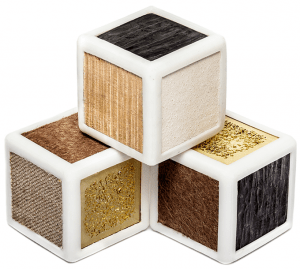 We spend so much of our days touching plastic – computers and their mice, phones, cars and other forms of transportation. Take a moment to ponder the ratio of plastic things you touch over the course of a day versus wooden, stone, or other natural objects. Our human roots can tell the difference when we deprive ourselves of connections with the natural world.
We spend so much of our days touching plastic – computers and their mice, phones, cars and other forms of transportation. Take a moment to ponder the ratio of plastic things you touch over the course of a day versus wooden, stone, or other natural objects. Our human roots can tell the difference when we deprive ourselves of connections with the natural world.
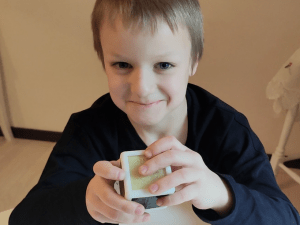 I’ve seen a variety of products made of natural materials whose sole purpose is to bring your attention back to the present and ground you. They’re made of wood, stone, natural fabrics, and metals and are meant to be held in your hand to help direct your attention back to the present. While these aren’t as exciting as the plastic, spinning, fidgety devices that are meant to distract you, the point is to do the opposite: ground and center you in order to calm your mind.
I’ve seen a variety of products made of natural materials whose sole purpose is to bring your attention back to the present and ground you. They’re made of wood, stone, natural fabrics, and metals and are meant to be held in your hand to help direct your attention back to the present. While these aren’t as exciting as the plastic, spinning, fidgety devices that are meant to distract you, the point is to do the opposite: ground and center you in order to calm your mind.
Auditory
Auditory learners understand and process things better through sound, whether that’s spoken words, music or other sounds. For this group, guided meditations can be a powerful way to ground and focus the mind on the words of the person narrating the meditation. Calming music or nature sounds can provide the same benefits. Playing music while you work can help auditory learners focus while it’s a major distraction for others.
Most of the mindfulness and meditation apps available like Calm, Simple Habit, Headspace and Breethe use primarily guided meditations focused on a specific purpose (getting to sleep, dealing with an anxious moment, commutes to and from work, etc.) to focus and ground you in the present moment. For many, these are quite powerful and help to create an oasis in the midst of a crazy day.
 Singing bowls produce beautiful music that invokes deep meditative and peaceful states. They are often used in yoga, reiki, music therapy, and sound healing. The rich harmonies produced by singing bowls help balance the body’s chakras, eliminate stress, and promote holistic healing.
Singing bowls produce beautiful music that invokes deep meditative and peaceful states. They are often used in yoga, reiki, music therapy, and sound healing. The rich harmonies produced by singing bowls help balance the body’s chakras, eliminate stress, and promote holistic healing.
Listening to the sounds of nature in the background can also produce a calming effect. I have found some wonderful free apps that were intended to work with hearing devices to help those with tinnitus that offer a variety of nature tracks. With the sounds of the forest, crashing waves of the ocean, birds singing, the wind rustling in the trees, or the crackling sounds of a campfire, I find it easier to block out more annoying background noises so I can focus.
One Size Does Not Fit All
Experiment with a combination of the ideas I’ve described here to find what works best for you. Also, understand that each day is different. What works for you one day may completely annoy you the next. Be flexible and flow with what your heart is telling you.
As you experiment, notice whether these tools are truly helping you to calm and focus or whether they’re merely distracting you from what your heart is trying to tell you. One of the healing powers of mindfulness and meditation is the ability to help you listen to your heart so you can learn how to heal whatever may be broken. Distractions take you further away from the healing process.
Experimentation can also help you see that there are many ways to meditate. There is no one “right” way. What works for one doesn’t for others. Meditation does not mean sitting in a lotus position and having a blank slate in your mind (unless that works for you).
Meditation can happen when you’re sitting, standing, walking, or lying down. While the methods of focusing that I’ve described can help you slow your mind chatter, nothing can stop it. You’re human. You can’t turn off your brain. Meditation can help you to more objectively observe what’s going through your mind so that you can detach from it. You are not your thoughts, and meditation can help you understand that.
To support you in your experimentation process, on my Recommended Resources page I’ve gathered a variety of books, courses, and products that either I or people I know and trust have created. I update this page as I learn about and experiment with new things myself. My hope is that something there can help you on your journey.
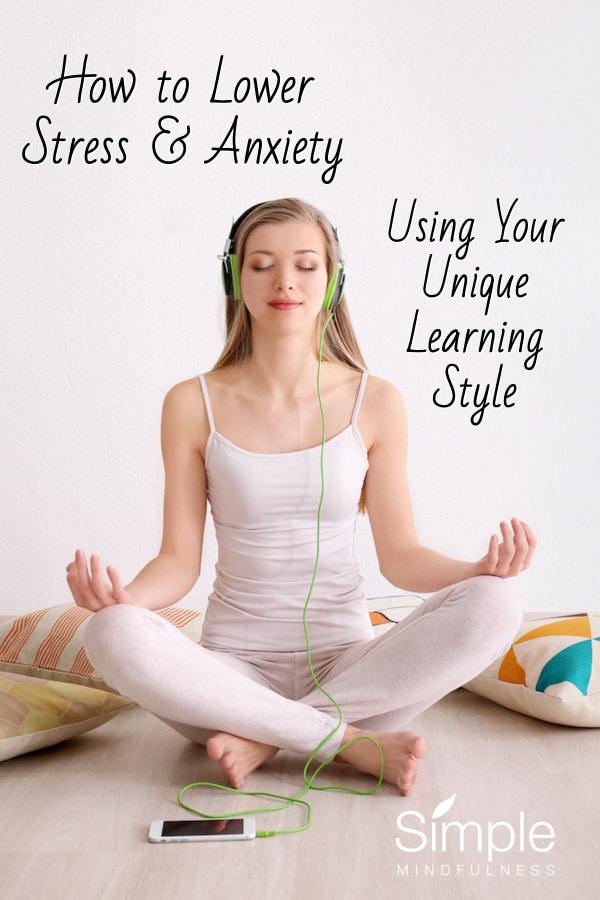
Create the life you want: Combine the law of attraction with mindfulness
The law of attraction suggests that our positive or negative thoughts bring about positive or negative experiences. My latest book, The Mindful Guide to Law of Attraction, pairs that belief with the powerful practices of mindfulness. Through intentional breathing, writing, and engaging, you’ll hone a method for manifesting health, wealth, and love―the elements of happiness.
Let the law of attraction work for you by adopting its basic steps of identifying and visualizing the things you desire. Then use 45 practical meditation techniques included in the book to achieve awareness. By concentrating your positive energy on obtaining your wants, you’ll give yourself permission to receive them.
To your happiness! ~Paige

You can find this book at Amazon, Barnes & Noble, Books-A-Million, and Indigo.


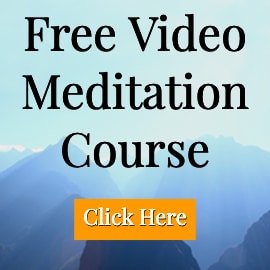




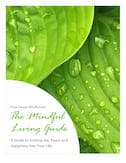 The Mindful Living Guide
The Mindful Living Guide
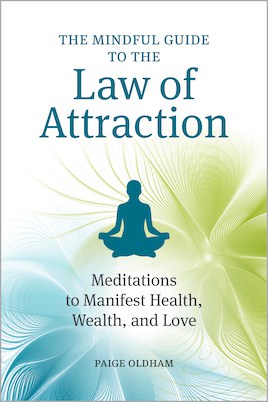
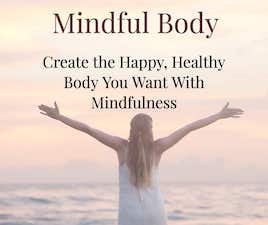

I consider music as the basis for meditation, ranging from recorded sounds of nature to light jazz.
In fact, I have long ago determined for myself that not all types of meditation help me. Visualization, for example, works only in rainy or snowy weather. Then I can simply immerse myself in my thoughts without distraction. But if it’s sunny outside, it doesn’t work that way. I am just unable to concentrate and I am constantly distracted by external stimuli. But music is a certain beautiful kind of meditation for me. I can meditate to almost any kind of music. Especially when it’s with strings.
Guided meditations are great for beginners I think. I rarely use them any more. In the beginning they keep you focused, but after some months of practice, I have the impression that they distract more than that they keep you focused. In any case, they tend to keep you from going deeper.
But whenever I want to try a new style of meditation, I use them again in order to familiarize myself with this particular meditation. And after a few listenings, I discard them again.
I feel the same way Olivier. I think guided meditations are great for those starting out until they develop their own style and ways of meditating. Some experienced meditators like background music or sounds like the ocean or other nature sounds while others prefer silence. We’re all different and need to discover what works for each of us. And we all change and evolve and need to be open to changing up our practices so they continue to serve us. Thanks for your input!
Interesting although I now know that through listening, visualising and feeling I can come to calm
it can be a matter of balance
Balance is key! Most people use a bit of all of the learning styles for the best effect.
I think I may be partial to all the learning styles. I like to mix it up depending on what I’m feeling that day. Most of the time, I do like meditation music – chimes, Tibetan bowls, nature sounds – when I meditate. However, sometimes, I need quiet – as even those noises are too stimulating. I also like to do visualizations and affirmations.
I also find yoga can be a moving meditation for me where I really focus on my body and breath.
Listening to your heart and using what works for you in the moment is usually the most effective approach. What worked in the past may not work now or in the future. Experimenation is always helpful as well.
This is an interesting article, Paige. I know with learning we have different styles. It makes sense to apply this to meditation as well. I’ve tried various recordings for meditation. Sometimes they are helpful, but mostly I like silence. Thanks!
I feel the same way, Cathy. I’m starting to notice how I can apply the concept of learning styles to many aspects of life for better/happier results.
Interesting Paige – I tend to be a bit of all of these. I do tend to like some guided meditations, though with the caveat that there are a lot that I don’t find helpful at all. Meditations focused on breathing work for me since they allow me to meditate my way, which is different on different days, depending on how I’m feeling. Great rundown on the variety of meditations available. Thank you for this.
Using a variety of approaches can help people understand that there’s no one way to meditate. It’s a very individual process of experimenting and finding what works for you which, as you pointed out, can vary from day to day.